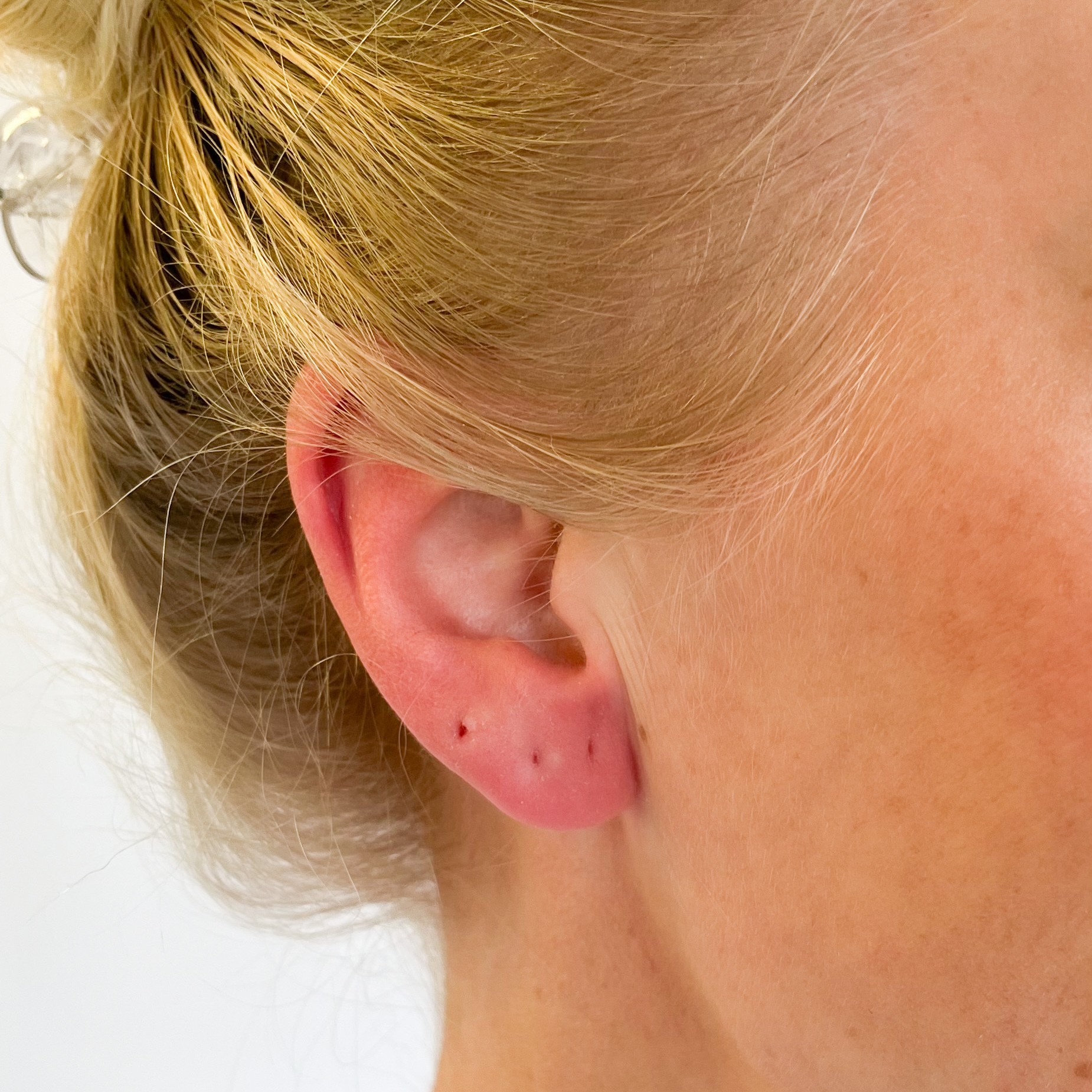Oh No, Is That an Infection? A Parent’s Guide to Earlobe Piercing Infections
Hello there, super parents! Are you concerned about that new twinkle in your child’s ear turning into a troublesome twinge? Fear not! Welcome to our cozy corner where we tackle earlobe piercing infections head on. Whether you’re a piercing newbie or a seasoned pro, knowledge is your best friend, and we’re here to guide you every step of the way, ensuring your little one’s piercing experience remains as sparkly as their eyes when they got their ears pierced. Let’s keep those lobes looking lovely!
Signs of an Earlobe Piercing Infection
First things first, let’s decipher the clues that an infection might be stirring in those cute little earlobes. Learning the signs of an infection is crucial so you can take swift action and prevent any further discomfort or complications.
- Redness and Swelling: It’s natural for a new piercing to be a bit red and swollen, but if this lingers longer than a couple of days, it might be time to raise an eyebrow.
- Pain or Tenderness: If the oohs and aahs over those earrings turn into ouches, your parental senses should be tingling.
- Warmth: An infected piercing can feel warm or hot to the touch – a definite sign that all is not well in lobeland.
- Discharge: A bit of clear fluid is normal, but yellowish or greenish gunk? Nope, that’s not part of the plan!
- Bleeding: A bit of initial bleeding is okay, but if it persists, it’s not something to overlook.
What Causes an Earlobe Piercing Infection?
Understanding the villains behind these infections can help us prevent them. Here are the usual suspects:
- Improper Piercing Technique: A piercing not done in a sterile environment or with unsterilized equipment is a prime candidate for trouble.
- Inadequate Aftercare : Skimping on the aftercare routine? That’s a big no-no! Cleanliness is next to, well, healthy piercings.
- Touching with Dirty Hands: Little hands love to explore, but they also love to carry germs. Remind your kiddos to keep their hands off their new bling!
- Allergic Reactions: Sometimes it’s not an infection, but an allergy to the jewelry material. Nickel is often the culprit here.
- Friction or Trauma: Rough play or snagging an earring on clothing can irritate the piercing and invite unwelcome bacteria.
Piercing Aftercare: How to Dodge Those Infection Gremlins
Now that we’re armed with knowledge, let’s put on our super-parent capes and zoom into aftercare mode! Simple steps, followed consistently, can make all the difference. Here’s what you need to keep at the forefront:
- Saline Solution Is Your Pal: A gentle saline soak twice a day can keep the area clean and fend off nasty germs.
- Patience and TLC: Remind your kiddo that piercings are like tiny gardens – they need time and tender care to bloom. No playing with the earrings!
- Tight isn’t Right: Ensure the earring back isn’t too tight – the skin needs room to breathe as it heals.
- Sleep Savvy: Encourage back-sleeping for a bit – it reduces pressure on the earlobes and helps them heal.
So, there you have it, the beginnings of what promises to be an enlightening quest into the realm of earlobe piercing infections. Remember, the goal is not just to treat, but to prevent! Stick with us as we delve deeper into treatments and other essential pearls of wisdom to keep your child’s earlobes happy and infection-free. With love, patience, and this trusty guide, those earlobes are going to be just fine!
Stay tuned, dear parents, as we continue our journey in the next section. We’ll explore treatments for infections and share pro tips to ensure your child’s piercing experience remains a delightful milestone. Together, let’s keep those ears pristine and your spirits soaring!

5 Things Parents Should Know in Preparing for Earlobe Piercing Infections
Before taking your child to get their earlobes pierced, there are some golden nuggets of wisdom you should pocket. Being prepared can help avoid infections or enable you to tackle them more effectively if they appear. Here are five must-know tips:
- Choose a Reputable Piercer: Select a piercing studio with sterling reviews, where piercers use sterile techniques and equipment. A good indicator is seeing that the studio follows the guidelines set by professional health bodies such as the Association of Professional Piercers (APP).
- Opt for Hypoallergenic Jewelry: To minimize the risk of allergic reactions, choose earrings made from surgical stainless steel, titanium, or 14k gold. These materials are less likely to irritate the skin and cause complications.
- Get educated on Proper Aftercare: Even before getting those ears pierced, learn the aftercare instructions by heart. Ask the piercer for a written guide and clarify any doubts you may have. Knowing how to clean and care for the piercing properly is half the battle won!
- Prepare a Cleaning Kit: Stock up on the essentials, like sterile saline wound wash, soft gauze or cotton balls, and a mild, unscented soap. Having these on hand ensures you’re not scrambling when it’s time to do the aftercare routine.
- Monitor Your Child’s Activity: For the first few weeks, it might be best to limit activities that could introduce bacteria to the fresh piercing, such as swimming in pools or lakes. Also, ensure that any sports activities are done with care to prevent trauma to the ears.
Treating an Infection: The Parental First-Aid Kit
Despite your best efforts, sometimes an infection can sneak in. Here’s how you can play doctor at home and help your child’s earlobes heal:
- Keep it Clean: Continue with the saline soaks or use a saline wound wash spray directly on the piercing, followed by a gentle rinse with water, and carefully pat dry with a clean paper towel.
- Daily Observation: Keep an eagle eye on the piercing sites. Noting changes in appearance or any symptom escalation is vital in judging if professional medical help is needed.
- Over-the-Counter Help: Apply a small amount of over-the-counter antibiotic ointment if the infection is minor, but first check with a pediatrician to ensure it is safe for your child.
- Seek Medical Care When Necessary: If there’s no improvement within 24 hours after starting home treatment or if symptoms escalate, visit your healthcare provider. Sometimes an oral antibiotic may be required to combat the infection.
Budding infections can be stressful, no doubt, but rest assured, they are often manageable with the right care and swift action. Yes, your little one might not be thrilled with the extra fussing, but in no time, those lobes will be back to beaming with charm.
As we journey through the realm of keeping piercings healthy and beauteous, remember that you are not alone. Many parents have navigated these waters before, and armed with the correct knowledge and resources, you too will guide your child’s earlobe piercing experience to smooth sailing. Keep up the vigilant work, trust the process, and know that every care step you take is a love note to your child’s wellbeing.
Forward we march, with cleanliness as our shield and care as our trusty steed, into the delightful world of ear piercings—sparkling with pride and joy, not with signs of infection!
This guide isn’t just about reacting to infection; it’s about empowering you, the caring parent, with proactive wisdom. As we continue this guide, we will take a closer look at recommended jewelry types, timing considerations for sports and activities, and even how to handle those touchy subjects like convincing your young ones to leave their new shinies alone. So stick around as we polish up our knowledge on maintaining the sparkle in both the earrings and your child’s happy and healthy experience!
For more great articles please see here. For more information see here
Disclaimer
The articles available via our website provide general information only and we strongly urge readers to exercise caution and conduct their own thorough research and fact-checking. The information presented should not be taken as absolute truth, and, to the maximum extent permitted by law, we will not be held liable for any inaccuracies or errors in the content. It is essential for individuals to independently verify and validate the information before making any decisions or taking any actions based on the articles.




